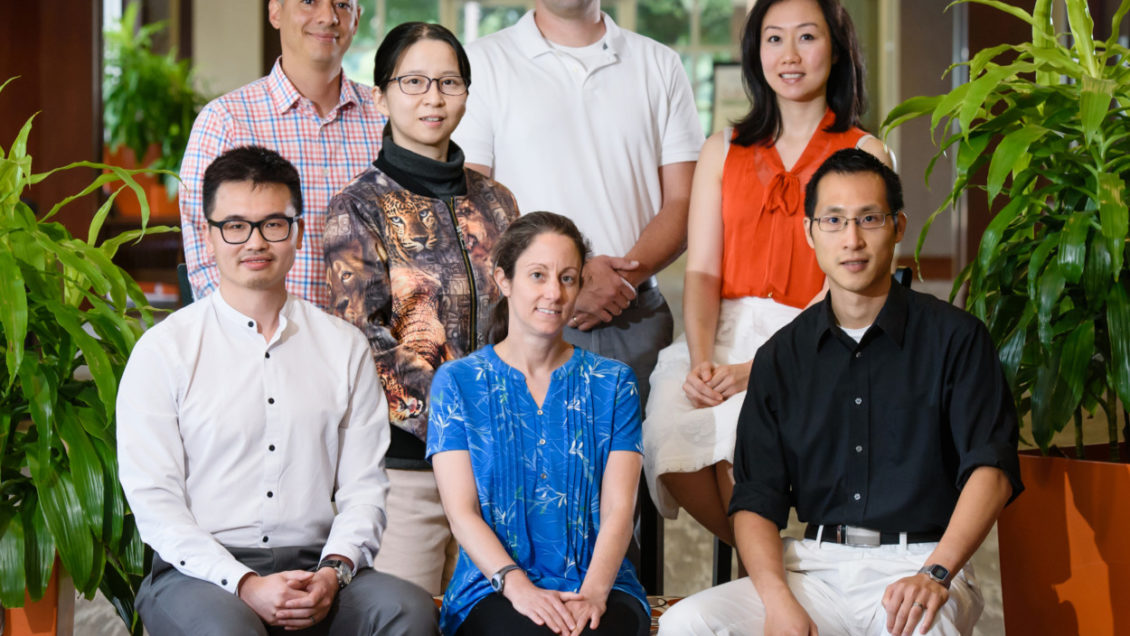
For the second year in a row, seven Clemson University faculty members received 2018 National Science Foundation Early Faculty Career Development Awards, one of the most prestigious awards to young faculty.
From adapting the art of Japanese origami to structural engineering to predicting the earth’s response to space storms, these Clemson assistant professors apply their creative and intellectual prowess to solve practical problems. Each researcher will receive up to $500,000 over five years to build a firm scientific footing for solving challenges and scaling new heights for the nation,” according to the NSF. They allow “promising junior faculty to pursue cutting-edge research while simultaneously advancing excellence in education.”
“These are highly competitive grants awarded to the brightest young minds across the country. NSF CAREER awards are catalysts for scientific discovery and help propel the careers of young faculty who are destined to do great things,” said Tanju Karanfil, vice president for research.
The 2018 Clemson CAREER Award winners are:
Joshua Bostwick, assistant professor of mechanical engineering. Bostwick’s research aims to improve drug delivery in the body by understanding the physical interaction between liquids and soft tissue in the body. Doing so will help physicians determine the proper dosage for a variety of medications, like aerosolized drugs used for premature infants or for people with asthma. It could also lead to better designs of drugs for more effective and efficient delivery.
Leah Casabianca, assistant professor of chemistry. Casabianca is studying the interaction between nanoparticles, like microplastics, and the body. Nanoparticles are becoming more common in the environment and in the food chain. By understanding what happens to them in the body, Casabianca hopes to head off diseases they may cause. To study nanoparticles, she and her team are developing new techniques for nuclear magnetic resonance (NMR) imaging. Improving NMR could also improve the precision of magnetic resonance imaging (MRI), used in clinical medicine.
[vid origin=”youtube” vid_id=”INjjawb0Eh0″ size=”medium” align=”left”]
Ethan Kung, assistant professor of mechanical engineering. Kung is creating a model for the human cardiovascular system that will predict how implantable devices, like left ventricular assist devices in patients with heart failure, will interact with the body. A feedback loop will use computer simulation and a patient’s specific biological information to predict how a device affects things like blood pressure and disease progression to help physicians customize therapies.
Suyi Li, assistant professor of mechanical engineering. Li’s work hope to use principles of origami to create new building materials that maintain their mechanical properties when folded, or, when they’re folded, their strength or other properties become enhanced. Potential applications range from building materials that are both stiff and soft, so they absorb large vibrations, to robotic “skeletons” that stay strong when they shift shapes.
Xian Lu, assistant professor of physics and astronomy. Lu aims to predict how the earth responds to the transfer of momentum and energy in the middle and upper atmosphere from weather events, which move energy upward into space, and from changes on the surface of the sun, which shifts energy toward the earth. Such shifts can disrupt telecommunications, astronaut activities and even the power grid on earth.
Sara Riggs, assistant professor of industrial engineering. Riggs aims to redesign the concept of computer and other displays by shifting the focus from an individual user to teams. By understanding how teams use displays – from operating rooms to airline cockpits to military situations – they will learn how to present information, whether it’s visually, with sound or through touch. The goal is to present information seamlessly to help teams perform the tasks at hand.
Hugo Sanabria, assistant professor of biophysics. Sanabria’s work focuses on a specific protein called calcium-modulated protein. Calmodulin, as it’s called, is present in all eukaryotic cell (cells with a nucleus). In the human body, it is involved in signaling cells to perform certain tasks, from muscle movement to the immune response to memory. Although calmodulin is ubiquitous, Sanabria’s team aims to be among the first to truly understand its mechanisms and its roles.
Get in touch and we will connect you with the author or another expert.
Or email us at news@clemson.edu

